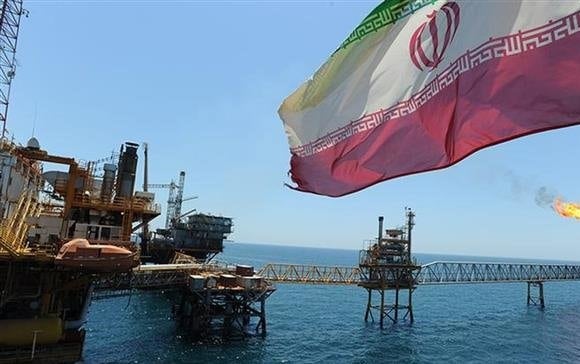Iran has blustered that the US cannot stop its oil exports, even as Tehran’s sales have fallen 40% since April amid the prospect of comprehensive American sanctions from November 5.
1st Vice President Es’haq Jahangiri said on Sunday that the Rouhani Government had devised mechanisms to counter the sanctions, ordered in Donald Trump in May when he withdrew the US from the July 2015 nuclear deal.
But Jahangiri betrayed the scale of the Government’s task when he lied about the situation:
Iran exported as much as 2.5 million barrels per day of oil over the past months. There had been a decline of a few thousand barrels per day.
In fact, Iran’s exports are below 1.5 million bpd and were as low as 1.1 million bpd in early October, although there may have been a limited movement beyond this through off-the-grid transport of oil.
South Korea and Japan, two of Iran’s largest customers, have said that they are suspending purchases from November. China, the #1 buyer, has ordered two top State companies to halt imports next month. India, the second-largest market, is continuing some business while seeking US waivers.
Jahangiri was more realistic with the aim of maintaining 40% of Iran’s export level: “We have always emphasized that Iran’s exports should not decline below one million barrels per day.”
Oil revenues account for halt the Government’s budget. The prospect of their limitation, along with long-term internal problems and other effects of sanctions, have led the International Monetary Fund to turn a projection of 4% growth into a 1.5% contraction this year and 3.6% decline in 2019.
Jahangiri used further manipulation of statistics to downplay the scale of the crisis, combining the assurance of increased revenues from a rising price of oil with a threat to the world of a spike if Iran’s exports are sharply curbed.
Iran used to sell its oil at $30 per barrel but is now selling it at $80 per barrel. If the Americans could ever prevent Iran’s oil sales, the prices would have already surpassed $100 per barrel.
While the global oil price fell to $27 per barrel in early 2016, it has been above $50 since December 2016. And Iran’s warning of a surge has been blunted by provisions by OPEC and Russia to cover any decrease in Tehran’s supply: far from soaring in expectation of comprehensive US sanctions, the price has dropped slightly in the past week to $77 per barrel.

